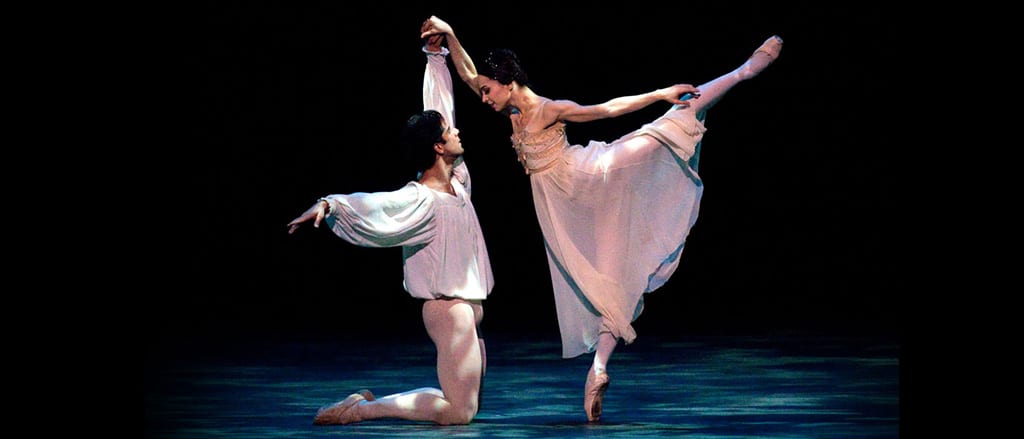Now, these hot days, is the mad blood stirring. So says Benvolio in Act III of Shakespeare’s Romeo and Juliet; throughout the play, repeated references to heat set the scene for the intense emotions – ‘brawling love’ and ‘loving hate’ – which will bubble over and consume the citizens of Verona. In the American Ballet Theatre’s production, this dangerous undercurrent of heat and passion is clearly present: the townspeople are full of life, something evoked not only by their lively dancing, but also the warm oranges and reds of their costumes.
This Verona is characterised by the extremes of lust and hatred, with each crowd scene dissolving into either lechery or a brawl. Brandt, Trenary, and Hurlin are excellently feisty as the ‘three harlots’, but the fights, by contrast, tend towards the lacklustre. While the corps de ballet members dance well individually, the crowd scenes are devoid of flair, and often there are co-ordination issues where one or more dancers is out of time – something which detracts heavily from the rest of the production.
Jeffrey Cirio is excellent as Mercutio, endowing the character with the humour and vitality of Shakespeare’s text. His duel with Tybalt is more engaging than the larger fight scene, and, thanks to Cirio’s acting skill, ends in surprising pathos. Forster, as Tybalt, is somewhat overshadowed by Cirio, especially since the character of Tybalt seems to have been less well developed – not quite a thug, not quite a misunderstood ‘good guy’, his role in the production is unclear.
In contrast to the fast-paced life of the rest of Verona’s citizens, Romeo and Juliet’s relationship is characterised by extreme stillness and intensity. Their blue and white costumes offer a cooler alternative to the heat of Veronese life, and their dances are slow and often interrupted by lingering pauses which add depth to their relationship. Hammoudi and Murphy are both excellent dancers, although they struggle at times with some of the more demanding lifts, and these moments are by far the strongest in the production.
ABT’s Romeo and Juliet stays true to both the spirit of Shakespeare’s text and MacMillan’s adaptation, but the talent of the principal dancers does not make up for the lack of cohesion throughout the rest of the production. The costumes are carefully designed and evocative of medieval Venice, but the scenery verges on gaudy; the design is inconsistent throughout. In the final scene, huge stone angels loom over the stage in a grotesque departure from the mainly traditional sets which have come before. Many elements of a fantastic production are present, but these ultimately fail to coalesce into anything meaningful.

